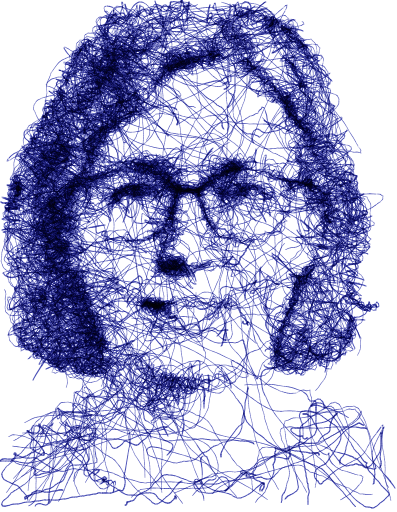Biography de Marinette Gré, painter

After encountering the Dada movement in 1922, Marinette Gré* participated from 1927 in the activities of Parisian Surrealism, alongside André Breton, Max Ernst, Paul Éluard, and René Magritte. Her most famous painting is an image of a chair with the caption “Ceci n’est pas une chaise” (“This is not a chair”). While it is documented that Marinette Gré and René Magritte interacted around the time of this painting (1928–1929), historians do not agree on whether Magritte’s painting The Treachery of Images, with its famous caption “Ceci n’est pas une pipe,” influenced Gré’s work or vice versa.
This character is fictional; Marinette Gré is an anagram of René Magritte. The photograph was generated by artificial intelligence.
This is not a chair.
A poem-chair
“I adopted the chair, this familiar object, a few decades ago, at a time when I wanted to create art on a human scale in public spaces, while everywhere else people opted for the monumental: it is an object shaped like the body and serves the body. It is difficult to feel exclusive ownership of an object so universally shareable. It is mine when I occupy it, but if I leave it, someone else can claim it as their chair.” Michel Goulet, artist-sculptor
The project Prendre position
Prendre position is a sculpture-installation project of 47 chair-poems to mark the 100th anniversary of the Cité internationale universitaire de Paris. They were installed in a flowered meadow created especially for the occasion by the campus estate service.
This artistic installation was conceived by the Quebecois artist-sculptor Michel Goulet, in collaboration with François Massut, founding director of the collective Poésie is not dead.
Each house on the campus is represented by a chair, thanks to a donation from the Maison des étudiants canadiens and the support of the Labrenne group. Each of the 47 chairs is a unique work.
History and architecture of the house
La Fondation Biermans-Lapôtre a vu le jour grâce à l’initiative de Jean Hubert Biermans, homme d’affaires d’origine limbourgeoise. Elle a été conçue par Armand Guéritte, architecte en chef du gouvernement français. Ce bâtiment monumental évoque l’architecture traditionnelle flamande et wallonne. La maison accueille prioritairement des étudiants belges et luxembourgeois.
